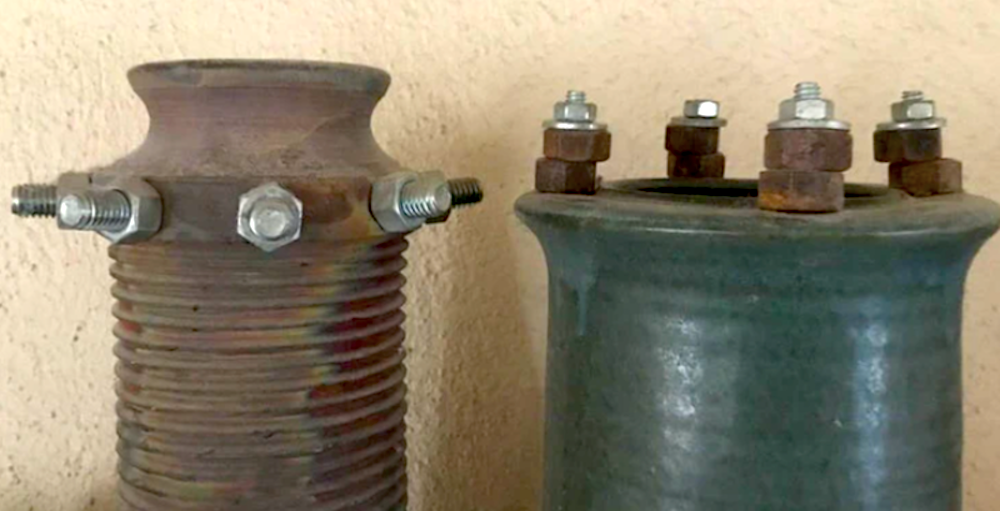
Have you ever come across an abandoned hex nut while out on a walk, or dug one up in the sand while playing with your family on the beach or park? I have often, and nearly every single one of these little stray hexagons have found their way in my pocket or purse. There’s something about that simple nut that I just can’t leave behind.
Contained in that little metal piece is a story. When I see a little metal hexagon that is no longer hugging its respective bolt, I can’t help but think something out there isn’t working properly or has long been discarded. A bike may have fallen apart under a rider, or a racing toy might be rattling along louder than it should. Perhaps something has been fixed or improved, and this little nut has been thanklessly left behind. That hex nut represents simple hard work, safety, and sheer multi-faceted (no pun intended) usefulness.
According to a Scientific American article “Nuts and Bolts,” by Frederick. E. Graves, the idea of threads in on hardware date back to 400 BC and, in his summation, the nut as a fastener has been around since the 15th century (although there are experts who differ on its exact origin). There are square nuts, wing nuts easy to manipulate with finger and thumb, cage nuts with their little upraised borders, and acorn nuts sporting a shiny dome, but the hex nut is most common.
As someone who grew up with a mechanic father and an artistic mother, I’ve always been fascinated by hex nuts. They have a perfectly smooth, symmetric outside, a strong threaded inside, and are much more fun to draw than nails or screws.
For one thing, hex nuts are very attractive little things. The symmetry of the little nut makes anyone with an inkling to create want to build or repair something. I’ve seen them pop up in jewelry design and art pieces as they fit together with a mathematical, Escher-like perfection to create patterns. Any 9-year-old can tell you how ideal these are for stringing on yarn or paracord. I have even seen nylon and aluminum-colored hex nuts sold on craft sites just for this purpose.
I knew one clay artist named Vicente Garcia when I was living in the small west Texas community of Alpine. He used to make “industrial-inspired” pieces either shaped like or adorned with hex nuts, bolts, and washers long before it was even a trend. He loved that a material easily manipulated such as clay could take on a rigid, perfect shape of a screw head or the threads of a bolt. He has since moved from the southwest to the Connecticut area, but I’m fortunate to still have some of his early nuts-and-bolts-inspired pieces.

More importantly, it is hard to imagine any piece of machinery or architecture that doesn’t take advantage of the strength and security of a hex nut somewhere. There are nuts as big as a human face holding together (hopefully securely) suspension bridges, and teeny-tiny easy-to-lose nuts for some electronics or reading glasses. Big or small, each one of these will pose a bit of a problem if lost.
The largest hex nut, however, can be found in the U.S. city of Green Bay, Wisconsin, built in 2016 near a metal fabrication business, Packer Fastener and Supply, Co. The 3.5-ton solid stainless steel nut stands 10-feet tall, but is so far not included in the Guinness Book of World Records, last I checked, nor has it made itself useful in any behemoth construction project. Still, someone built it, and it’s out there for people to see. That’s what matters.
Yet, we take these little six-sided wonders for granted, as they maintain their grip on something we drive, walk on, live in, log onto, or countless other things. I heard a stand-up comic comment on an incident several years ago where a British pilot was nearly sucked out of the cockpit because the maintenance workers used the wrong size nut and bolt pairing. Oopsie! We may not always be aware when these little metal bits are doing their job, but we sure as heck know when they are not.
My dad used to say one of the funniest and meanest tricks you can play is, when riding a Ferris Wheel at a roadside carnival, toss a few loose nuts in the seat and tell the people coming on after you: “These fell out about halfway through our ride… shouldn’t be a problem.”
Remember the old proverb “For Want of a Nail?” It has seen several variations, but the basic one reads:
“For want of a nail, the shoe was lost. For want of a shoe, the horse was lost. For want of a horse, the rider was lost. For want of a rider, the message was lost. For want of a message, the battle was lost. For want of a battle, the kingdom was lost.”
This is a perfect example of how each little piece is necessary, and even the lack of the smallest detail can potentially cause the toppling of a civilization.
A worthy lesson, indeed, but I can’t help but wonder how good that shoe would have held if they figured out a way to comfortably attach it a hex nut and bolt.
Click through to read all of “Hex Nut Musings: A Look at the Beauty of Simple Design” at GeekMom.If you value content from GeekMom, please support us via Patreon or use this link to shop at Amazon. Thanks!



